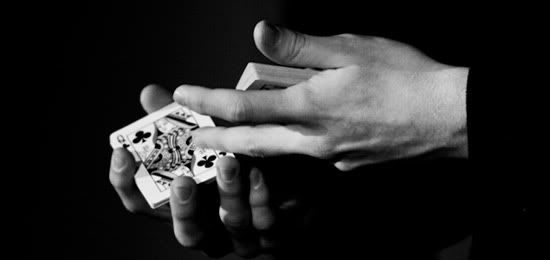In 1896, Joseph Jastrow, founder of the renowned psychology department at the University of Wisconsin, invited two of the most illustrious figures in the history of magic into his laboratory: Alexander Herrmann (also known as "Herrmann the Great") and Harry Kellar. The two were unlikely collaborators. At the time, Herrmann was the world's best-known magician, and Kellar was arguably his greatest competitor. Their "paper wars" were infamous. If both were performing in the same town, they made a point of posting their own advertisements over those of their competitor. This resulted in layers upon layers of posters, as each tried to out-do the other.
Jastrow solicited the help of these magic icons because he was interested in examining the effect of magical expertise on perception and attention. It was reasoned that these men, who were masters in the manipulation of attention and perception, may have developed more highly-sensitive perceptual faculties by virtue of their expertise. To this end, Jastrow led Herrmann and Kellar through a battery of different tests of tactile sensitivity, motor fluency, and visual perception. Although the magicians evinced substantial individual differences on most of these tasks (with Herrmann demonstrating a flippant , arrogant attitude in his performance, which led to low accuracy and slow reaction time in many instances), Jastrow was forced to conclude that, in general, the conjurers' faculties did not differ from those of the average participant.
Recently, a new study has been released by Cristina Cavina-Pratesi, Gustav Kuhn, and colleagues (2011) taking an approach similar to Jastrow's. Magicians regularly produce actions that are meant to simulate other actions. For example, they may pretend to transfer a coin from one hand to the other while really retaining it in the original hand. Pantomimed actions of this type have been studied before (although not with magicians), and they consistently produce kinematic patterns that vary substantially from those of purposeful actions. Cavina-Pratesi and colleagues were interested to know whether magicians, who have honed their pantomime skills, show these same biases in pantomimed behavior.
To test this, they first asked a group of magicians and non-magicians to grasp and move a block of wood from one location to another or to pantomime the same action. While participants completed the task, researchers tracked the kinematics of each type of grasp. Importantly, just before the grasp (or
 |
| Figure 1: From Cavina-Pratesi et al. (2011) |
The researchers found that magicians did not demonstrate many of the standard kinematic biases usually observed during pantomimed grasping. Specifically, people usually have a reduced grip aperture when pantomiming a grasp. Otherwise stated, they don't open their fingers as wide when initiating a pantomimed grasp as they do when initiating an actual grasp. This bias was not apparent in the kinematics of the magicians, while it did appear for the non-magicians. Thus, magicians' pantomimed grasps are quite similar to their actual grasps. This was even the case when they were asked to grasp the block of wood in an unusual way (see Figure 1d).
In a follow-up experiment, Cavina-Pratesi et al. showed that these biases do emerge when magicians are asked to simply imagine the object in the absence of visual stimulation. From this, they concluded that magicians do not have improved visualization abilities compared to non-magicians. Instead, they are more adept in the use of environmental information (the distal image of the wood block) to guide their pantomimed action. In their words, "[Magicians] have learnt that the best way to fake an action is by performing it 'for real'" (p. 4).
Further support for this position has been provided by Natter and Phillips (2008) who showed that experienced magicians are attuned to and able to simulate subtle muscular and temporal shifts that coincide with the transfer of a coin from one hand to the other (as simulated in the classic French Drop sleight), while novice magicians are relatively insensitive to these characteristics of physical manipulation. Indeed, the best way to learn sleight of hand is to first increase one's awareness of the kinematics involved in the action being simulated.
References:
Cavina-Pratesi, C., Kuhn, G., Ietswaart, M., & Milner, A. D. (2011). The magic grasp: Motor expertise in deception. PLoS ONE, 6, e16568. doi: 10.1371/journal.pone.0016568. [link]
Jastrow, J. (1896). Psychological notes upon sleight-of-hand experts. Science, 3, 685-689.
Natter, M., & Phillips, F. (2008). The french drop sleight: Deceptive biological motion [Abstract]. Journal of Vision, 8, 1052. doi:10.1167/8.6.1052. [link]







